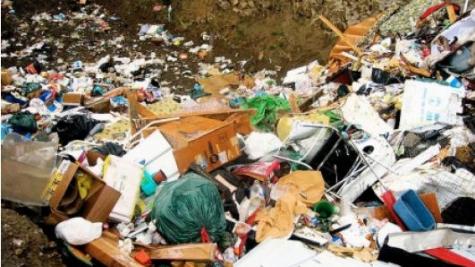Air Quality in the United States: Florida Makes the Grade

With smoke from the recent Canadian wildfires making its way to the US, extra focus has been placed on air quality concerns. Air quality is a crucial aspect of environmental health and public well-being, affecting millions of lives across our country. Along with incidents like the Canadian wildfires, increasing urbanization, industrialization, and transportation demands make maintaining clean air a challenge. In today’s world, it’s essential to understand the importance of air quality, the factors that influence it, how it’s monitored, and how the United States measures up. With the high number of baby boomers moving to Florida, we’ll take a specific look at that state and how it compares to the rest of the country.
The Importance of Air Quality
Clean air is essential for human health, ecosystems, and overall quality of life. Air pollution can lead to various adverse effects, including respiratory diseases, cardiovascular issues, and even premature death. Additionally, air pollutants can harm plant life, damage buildings, and infrastructure, and disrupt the delicate balance of ecosystems. The Environmental Protection Agency (EPA) and state agencies closely monitor and regulate air quality to mitigate these risks.
Factors Influencing Air Quality
Several factors contribute to air pollution in the United States, and they vary across regions. Some of the main sources of air pollutants include:
Transportation
Vehicle emissions, especially from cars and trucks, release significant amounts of pollutants like nitrogen oxides (NOx) and volatile organic compounds (VOCs).
Industry
Manufacturing processes, power plants, and other industrial activities emit pollutants, such as sulfur dioxide (SO2) and particulate matter (PM).
Agriculture
Agricultural practices, including livestock farming and the use of fertilizers, contribute to ammonia (NH3) emissions and dust particles.
Energy Production
The burning of fossil fuels for electricity and heating generates pollutants like carbon dioxide (CO2), sulfur dioxide (SO2), and nitrous oxides (NOx).
Wildfires
Wildfires can release significant amounts of particulate matter, black carbon, and other harmful pollutants.
Natural Sources
Dust, pollen, and volcanic activity are examples of natural sources of air pollutants.
Air Quality Monitoring and Index
The EPA and state environmental agencies continuously monitor air quality using sophisticated equipment that measures various pollutants. Air quality is assessed using the Air Quality Index (AQI), a numerical scale that categorizes the level of pollution and its potential health effects. The AQI ranges from 0 to 500, with lower values indicating better air quality.
The AQI is divided into six color-coded categories, each representing a different level of health concern:
Green (0-50)
Good - Air quality is considered satisfactory, and air pollution poses little or no risk.
Yellow (51-100)
Moderate - Air quality is acceptable; however, there may be some health concerns for sensitive individuals.
Orange (101-150)
Unhealthy for Sensitive Groups - People with respiratory or heart conditions, children, and the elderly may experience health effects.
Red (151-200)
Unhealthy - Everyone may begin to experience health effects, and sensitive groups may experience more severe conditions.
Purple (201-300)
Very Unhealthy - Health alert: everyone may experience more serious health effects.
Maroon (301-500)
Hazardous - Health warnings of emergency conditions. The entire population is more likely to be affected.
Air Quality in the United States
Overall, the air quality in the United States has improved significantly over the past few decades, thanks to strict regulations and cleaner technologies. However, certain regions still face challenges, particularly in urban areas with high traffic congestion and industrial activity.
In recent years, the reduction in industrial emissions, increased adoption of cleaner energy sources, and advancements in emission control technologies have helped improve air quality in many areas. Nevertheless, climate change and the increasing occurrence of wildfires pose new challenges, as they contribute to the release of harmful pollutants.
According to wisevoter.com, the top ten states for air quality in the United States are:
1. Hawaii – 99.40%
2. Maine – 93.20%
3. Alaska – 92.30%
4. Virginia – 91.50%
5. Vermont – 91.30%
6. New Hampshire – 91%
7. Florida – 89.80%
8. New York – 88.70%
9. Washington – 88.70%
10. Louisiana – 87.90%
The ten most polluted states in the US are:
1. California – 60.60%
2. Arizona – 64.60%
3. District of Columbia – 69%
4. Utah – 70.20%
5. Nevada – 72.50%
6. Illinois – 75%
7. Colorado – 75.40%
8. Oklahoma – 76.70%
9. Iowa – 78.30%
10. Wyoming – 78.90%
Efforts will continue to be made across the country to improve air quality in all states.
A Specific Look at Florida’s Air Quality
In 2022, Florida saw more growth than any other state with a 1.9% population increase and a net migration of 318,855 people. Despite being a highly-populated state with increased urbanization and all that comes with it, the ocean breezes help maintain good air quality in Florida. Ranking 7th in the country with 89.8% good quality air days, Florida has 0% unhealthy air quality days making it 1st in the country within this category. This leaves only 10.2% of its days as moderate air quality days. So, all of you baby boomers moving to Florida can keep breathing easy!
Breathing It All In
Air quality remains a significant environmental concern in the United States. While air quality has improved nationally, certain regions still struggle with pollution levels, particularly in urban and industrialized areas. Despite being one of the most populated states and currently, the most popular state to move to, Florida’s ocean breezes help provide some of the best air quality in the country. A collective effort, nationally and at the state level, is essential to ensure that future generations can breathe clean and healthy air.
To help you find a community that feels like home, Community Finder offers Area Information and a comprehensive community search tool that provide a starting point for your home-buying journey.
For more articles and community releases from Community Finder, sign up for our newsletter.










